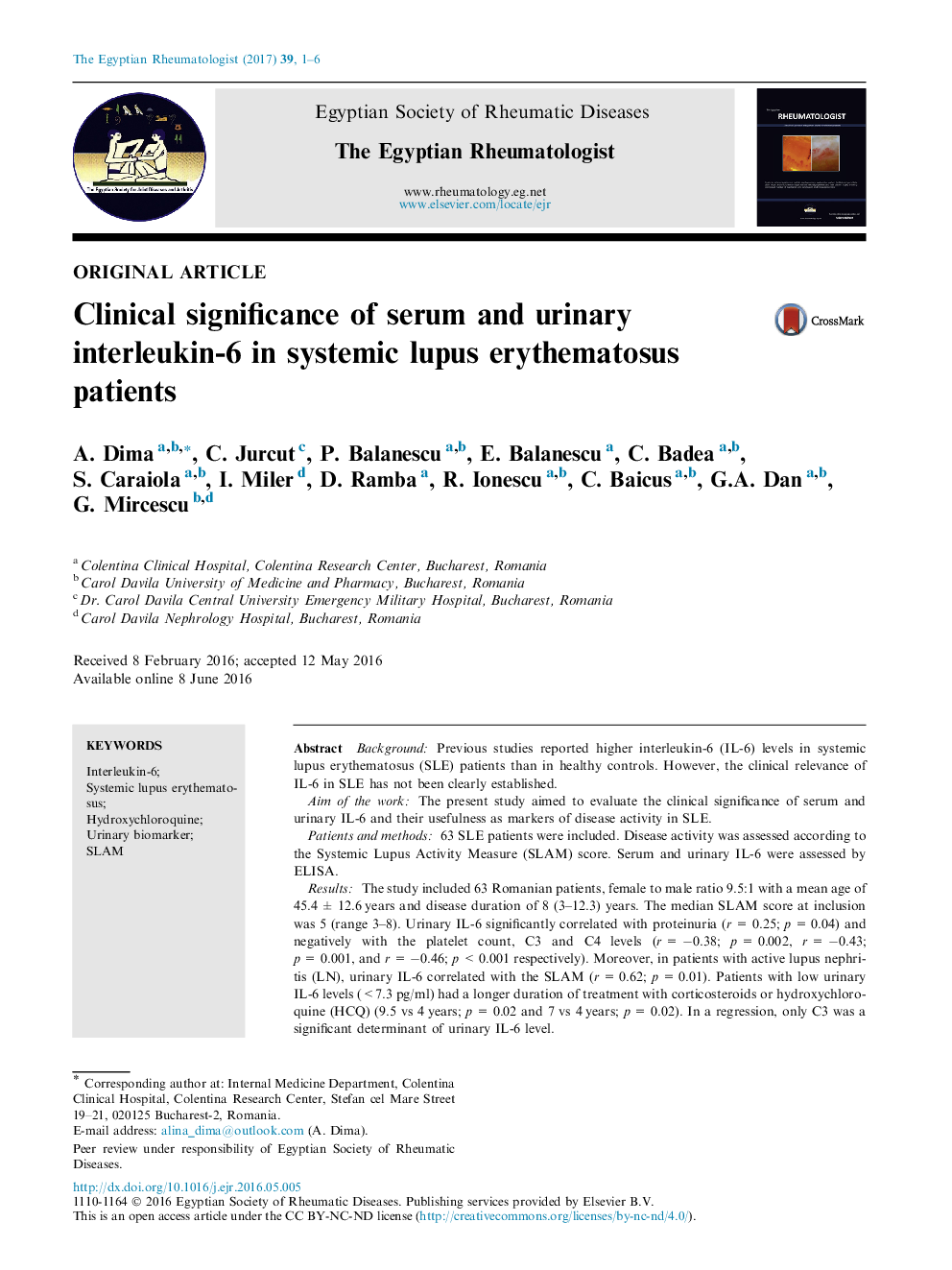| Article ID | Journal | Published Year | Pages | File Type |
|---|---|---|---|---|
| 5666070 | The Egyptian Rheumatologist | 2017 | 6 Pages |
BackgroundPrevious studies reported higher interleukin-6 (IL-6) levels in systemic lupus erythematosus (SLE) patients than in healthy controls. However, the clinical relevance of IL-6 in SLE has not been clearly established.Aim of the workThe present study aimed to evaluate the clinical significance of serum and urinary IL-6 and their usefulness as markers of disease activity in SLE.Patients and methods63 SLE patients were included. Disease activity was assessed according to the Systemic Lupus Activity Measure (SLAM) score. Serum and urinary IL-6 were assessed by ELISA.ResultsThe study included 63 Romanian patients, female to male ratio 9.5:1 with a mean age of 45.4 ± 12.6 years and disease duration of 8 (3-12.3) years. The median SLAM score at inclusion was 5 (range 3-8). Urinary IL-6 significantly correlated with proteinuria (r = 0.25; p = 0.04) and negatively with the platelet count, C3 and C4 levels (r = â0.38; p = 0.002, r = â0.43; p = 0.001, and r = â0.46; p < 0.001 respectively). Moreover, in patients with active lupus nephritis (LN), urinary IL-6 correlated with the SLAM (r = 0.62; p = 0.01). Patients with low urinary IL-6 levels (<7.3 pg/ml) had a longer duration of treatment with corticosteroids or hydroxychloroquine (HCQ) (9.5 vs 4 years; p = 0.02 and 7 vs 4 years; p = 0.02). In a regression, only C3 was a significant determinant of urinary IL-6 level.ConclusionsUrinary but not serum IL-6 seems to be related to SLE activity in LN patients. Treatment with corticosteroids or HCQ therapy might reduce urinary IL-6 levels in SLE.
